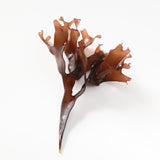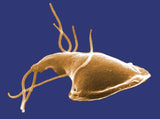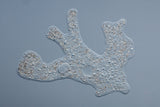How do you divide the eukaryotes? September 19 2019, 0 Comments
If I asked you how you would divide the eukaryotes into groups, what would you say? Many people would say protists, fungi, animals, and plants. This is the idea presented in Five (or Six) Kingdoms classification. There is a more enlightening way to divide the eukaryotes, one that students currently see in introductory college courses.
The DNA revolution and the development of systematics rather than plain classification have given us a new view. Systematics includes the relationships between taxonomic categories instead of listing them with no information about their shared ancestors. It is a young science that has produced many changes and will likely produce many more.
This is not to say that we don’t have useable information right now. The largest categories of eukaryotes have been defined, and they are called the eukaryotic supergroups. There are four of them presently, and so the eukaryotes can be divided into four groups. Here’s an introduction to the archaeplastida, SAR, excavata, and unikonts aka Amorphea.
Archaeplastida is the lineage that acquired the first chloroplast. Its name means “ancient plastids.” A plastid is a type of organelle in a eukaryotic cell, and the category includes the chloroplast, whose name means “green body.” The archaeplastida lineage includes red algae and green algae, along with the embryophytes or land plants, which evolved from a green alga. This lineage is the only one that incorporated an ancient cyanobacterium into its cells. The origin of the chloroplasts in other lineages is a more complicated story.


The SAR lineage is named for the three main branches within it, stramenopiles, alveolates, and rhizarians. These lineages were defined independently and then researchers gathered enough evidence to conclude that they share a common ancestor. The stramenopiles (aka chromists or heterokonts) include brown algae, golden algae, diatoms, and water molds. Alveolates include dinoflagellates, apicomplexans (parasites such as malaria), and ciliates. The rhizarians include foraminiferans and radiolarians, single cell organisms that build amazing outer shells called tests.


And where did these branches of life get their chloroplasts? It seems that chloroplasts are NOT easy to acquire. Apparently, it is easier to take one from another cell than to acquire one by eating a cyanobacterium. An ancestor of the stramenopiles and alveolates probably ate a red alga and kept its chloroplasts. Euglenas, which we meet below, got their chloroplasts from a green alga.
The third eukaryotic supergroup is the excavata, also called the excavates, but I see potential for confusion between the word as a noun vs. a verb. The lineage is named for a groove that looks like it has been excavated from the cells of some members. The excavata include the euglenas, which are free-living, and the trypanosomes, which are parasites. Other members of this group include the parasite Giardia and organisms that live in the guts of termites and help them break down cellulose. These have reduced mitochondria, so small that they were first described as lacking mitochondria.



I know you have been waiting for the last of the four supergroups, our own lineage, the unikonts (“single flagellum”) also known as the Amorphea (“having no form”). “Wait a minute,” you may be thinking, “we definitely have form.” The amoebas that belong to this lineage do not, however. The Amoebozoa lineage includes most of the slime molds or social amoebas as well as the single cell ones. Some of the latter build hard coverings (tests) for themselves. The other members of the unikonts are the fungus kingdom and the animal kingdom, which are sister kingdoms, having shared a common ancestor right before they branched off. There are other single cell organisms that are related to animals and fungi as well.



As you can see, the old protist kingdom had many different lineages of life shoe-horned into it, and the kingdoms that developed from its members were chopped off and boxed separately from it in the Five (or Six) Kingdoms scheme.
Why should you or your children learn about the supergroups of eukaryotes? It gives you a richer view of life and one that your children will see in their future studies. Will the names stay the same? Maybe, or maybe not, but these are the names in current college biology books, and it is worthwhile to learn about them and their members now.
Enjoy your explorations of the living world!
Priscilla


